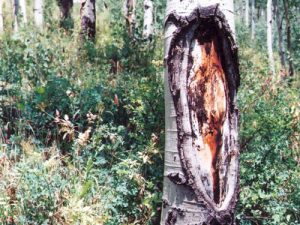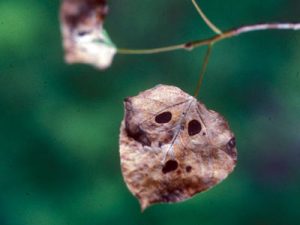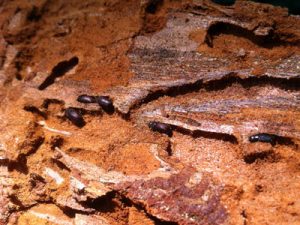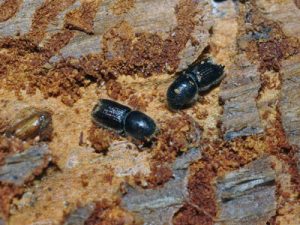Woodland Park Field Office – Insects & Diseases
Insects and diseases pose two of the most serious threats to a tree’s health.
As soon as you notice any abnormality in your tree’s appearance, you must begin a careful analysis to gain an understanding of the problem.
By examining the specific symptoms of damage and understanding their causes, you can make a reasonable diagnosis of the problem and select the proper treatment. If you are uncertain about the type of insect or disease, or do not know how to treat them, contact the CSFS Woodland Park Field Office to conduct a homesite assessment of the trees on your property.
Insect & Disease Diagnosis
A forester will inspect diseased or insect-infested trees for private landowners. Sick Tree Calls are done outside the city of Colorado Springs. Such visits are by appointment only, and have an associated service fee.
To schedule a site visit, please call (719) 687-2921 or email Michael Till.
More information about Common Forest Insects and Diseases is available on the CSFS website.
For more information on site visits please fill out this form.
Learn More About Common Forest Insects and Diseases
Aspen
Aspen Borer
- A wood boring beetle which lays eggs on the bark of aspen trees
- Beetle larvae bore into aspen wood, weakening it and easing the start of fungal infections
- Control: Maintaining vigorous tree health or use of chemicals while eggs are being laid

Aspen Cankers
- A fungal infection of Aspen trees which cause cankers or wounds on the tree bark
- Caused by various fungi including Ceratocystis and Cytospera
- Does not always cause tree mortality due to slow development of the canker

Ink Spot Disease
- A disease affecting the leaves of Aspen which is caused by the fungus Ciborinia
- Causes discoloration of Aspen leaves and may cause premature defoliation
- Control: Timely application of fungicide can prevent more severe outbreaks

Marssonina Blight
- The most common disease affecting Aspen trees, it is caused by the Marssonina Fungus
- Although there is leaf discoloration, this condition is usually not damaging
- Control: Timely fungicide application can prevent sever outbreaks

Douglas-fir
Douglas-fir Tussock Moth
- A moth with larva which attack and defoliate Douglas-fir as well as spruce and true fir species
- Defoliates starting from the top of the tree and working downward
- Control: Biological or chemical products are effective in springtime while new growth is appearing

Douglas-fir Beetle
- A bark beetle which attacks mature Douglas-fir forests, often when in drought conditions or under other stress factors.
- When a tree is dying from Douglas-fir beetle, its needles fade from green to red-brown before starting to drop off.
- Control: Management and thinning of overly dense stands is the best option. Various mechanical, chemical, and biological controls are also effective.

Pine
Mountain Pine Beetle
- Bark beetle that attacks pines including: lodgepole, ponderosa and bristlecone.
- Attracted to stressed trees and prefer large old trees
- Control: Maintain healthy stands or use Verbonone, an anti-aggregation pheromone that “repels” the beetles, chemical treatment

Ips Beetle
- A bark beetle that attacks pine and spruce. In Colorado piñon ips commonly attack piñon pines.
- There are 11 species of ips found in Colorado.
- Control: Maintain vigorous tree health, insecticides can be used.

Dwarf Mistletoe
- Affects all ages & sizes of ponderosa and lodgepole pines, as well as Douglas fir and piñon pine to a lesser degree.
- Parasitic plant that robs tree of nutrients & water, which causes growth reduction, poor tree form, loss of wood quality and subsequently premature death
- Control: Prune mistletoe infected branches and/or remove infected trees

Spruce
Spruce Beetle
- Bark beetle that only attacks spruce trees with a preference for Engelmann spruce
- Attracted to stressed trees and prefer large old trees in dense stands
- Control: Small outbreaks can be eliminate by quick action such as removal of infested trees

Western Spruce Budworm
- Douglas fir & true firs preferred, but will attack spruce
- Larvae feed on current year’s foliage
- 4-5 years of continuous defoliation can result in tree mortality and significant top kill
- Control: Spray pesticide on small scale and maintain a healthy diverse forest


